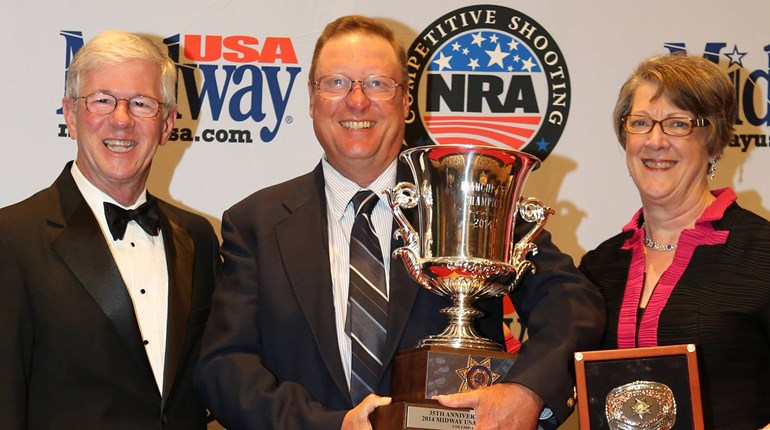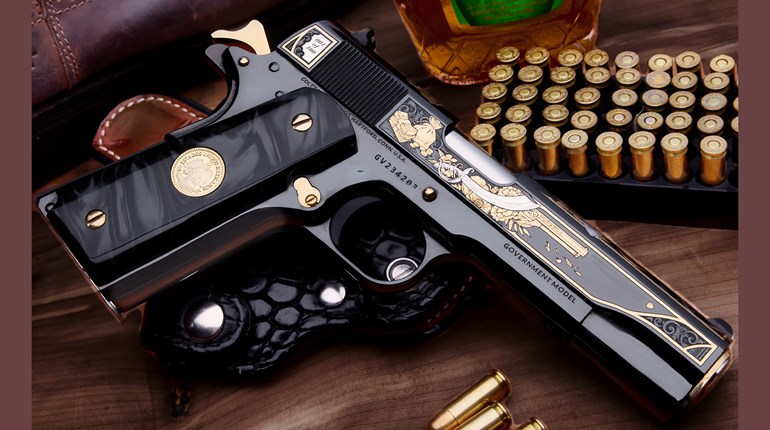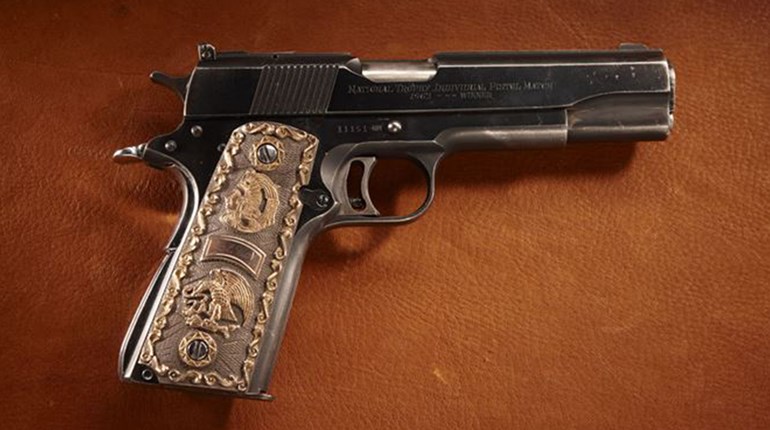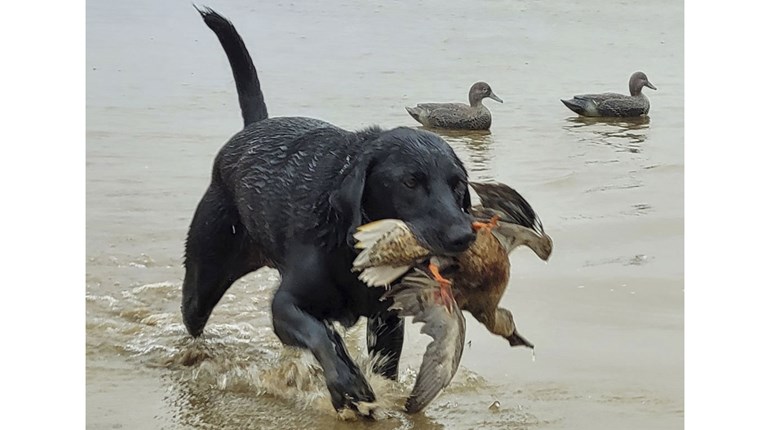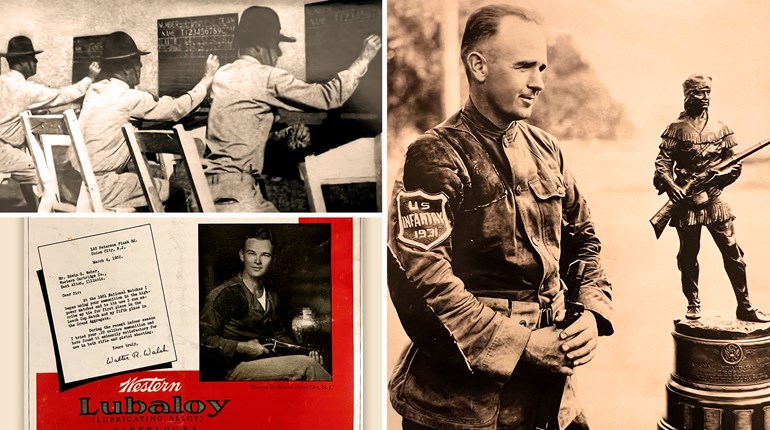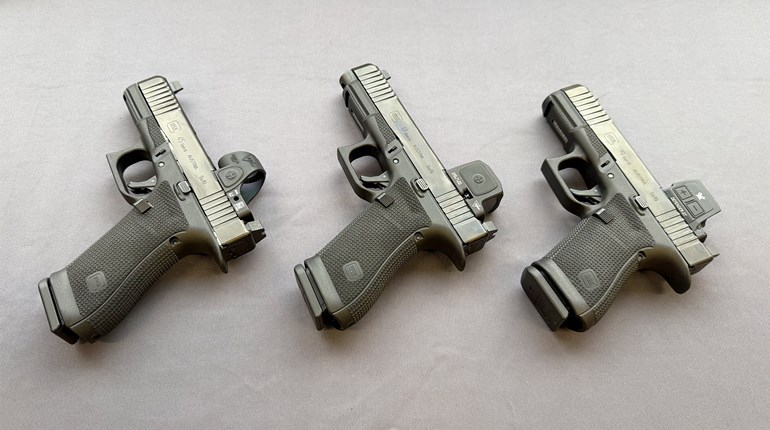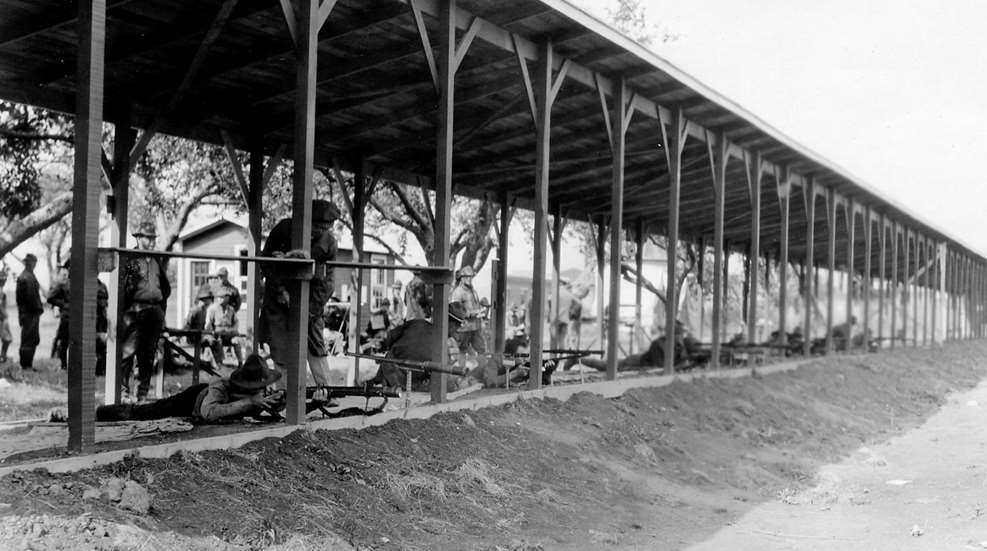
If you haven’t already, read Part 1 of this series.
The successful inaugural smallbore national championship in 1919 guaranteed Ned Crossman reappointment as Match Director. For the 1920 matches scheduled for Camp Perry he did not plan on toying with success. Crossman followed the 1919 program save one thing. As a tip of the hat to his wife’s 1919 success, he declared that ladies were now eligible to enter all matches.
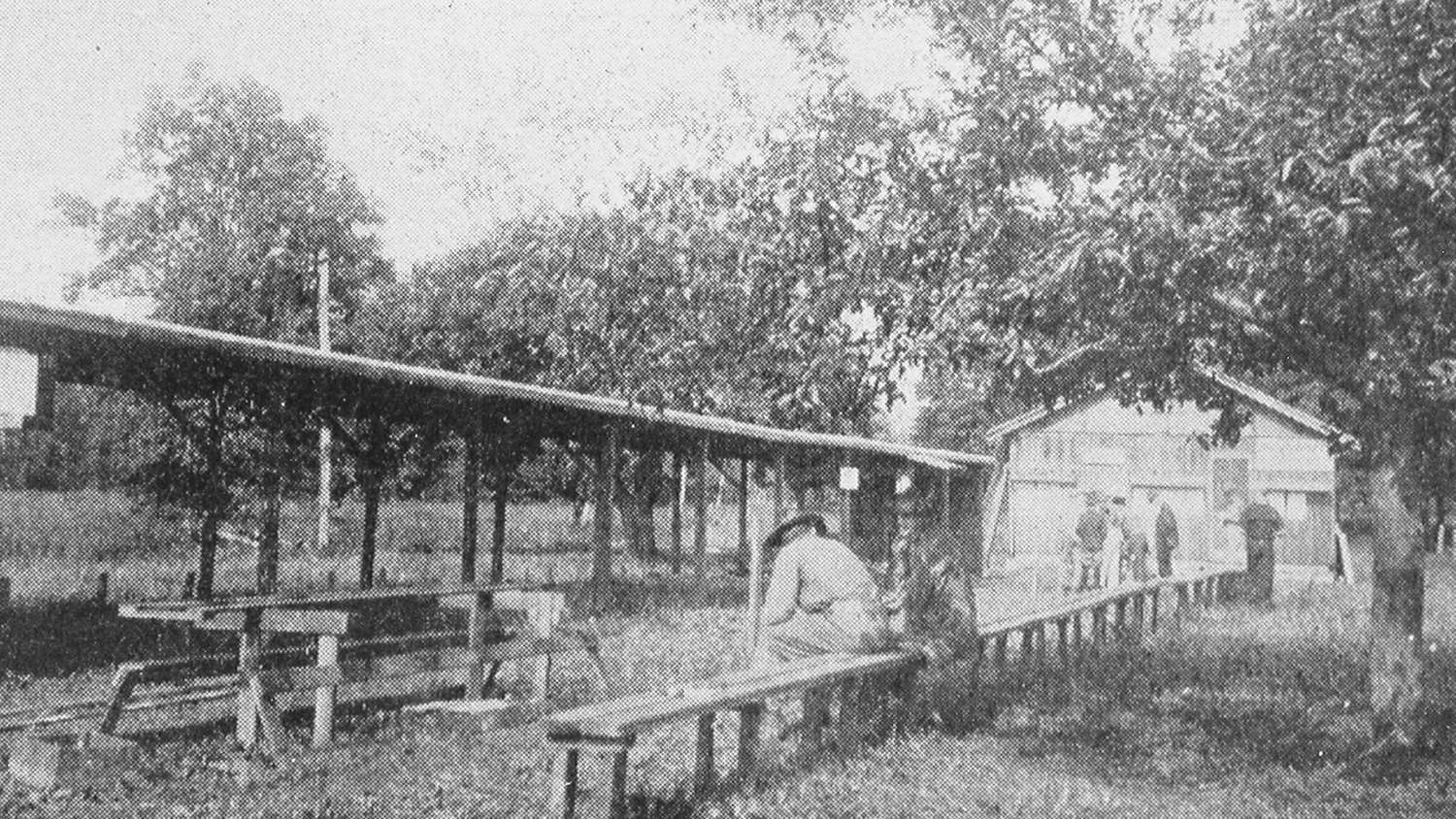
When the match program appeared in Arms and The Man smallbore competitors learned that a sheltered, 1000-foot long, hard packed dirt firing line would live on the western boundary of the camp. The range was out of the way but still attracted 200 individuals, accounting for 2,700 entries. The 1919 individual runner up, “Cap” Richard, won the 1920 Championship on a tie breaker―the first of many in the event. The U.S. ended up winning the Dewar Trophy.
The 1921 match finally dealt with the question of crossfires. A crossfire―now scored a miss for the shooter who shot it with the miscreant fined 50 cents―was paid before resuming firing. Slings were optional but a loading block mandatory as only the exact number of record rounds could be brought to the line. Milo Snyder won the national title with a 393, beating George Parker’s 393 with a higher long-range score. With the individual matches done the Dewar Team mustered for a successful defense of the Dewar Trophy.
The 1922 match conditions and schedule remained unchanged. J.F. Hauck captured the Individual Championship with a Dewar score of 395. The Dewar Team faced a strong wind sweeping off Lake Erie, but team officials decided to shoot through it. Coaching and hard holding paid off. After the 50-yard stage the score was the same as one fired on a calm day, but 100-yard scores showed effects of the winds. The team totaled a 7685, 50 points less than the winning score of 1921 so it was a great relief to learn that the British score was 7645.
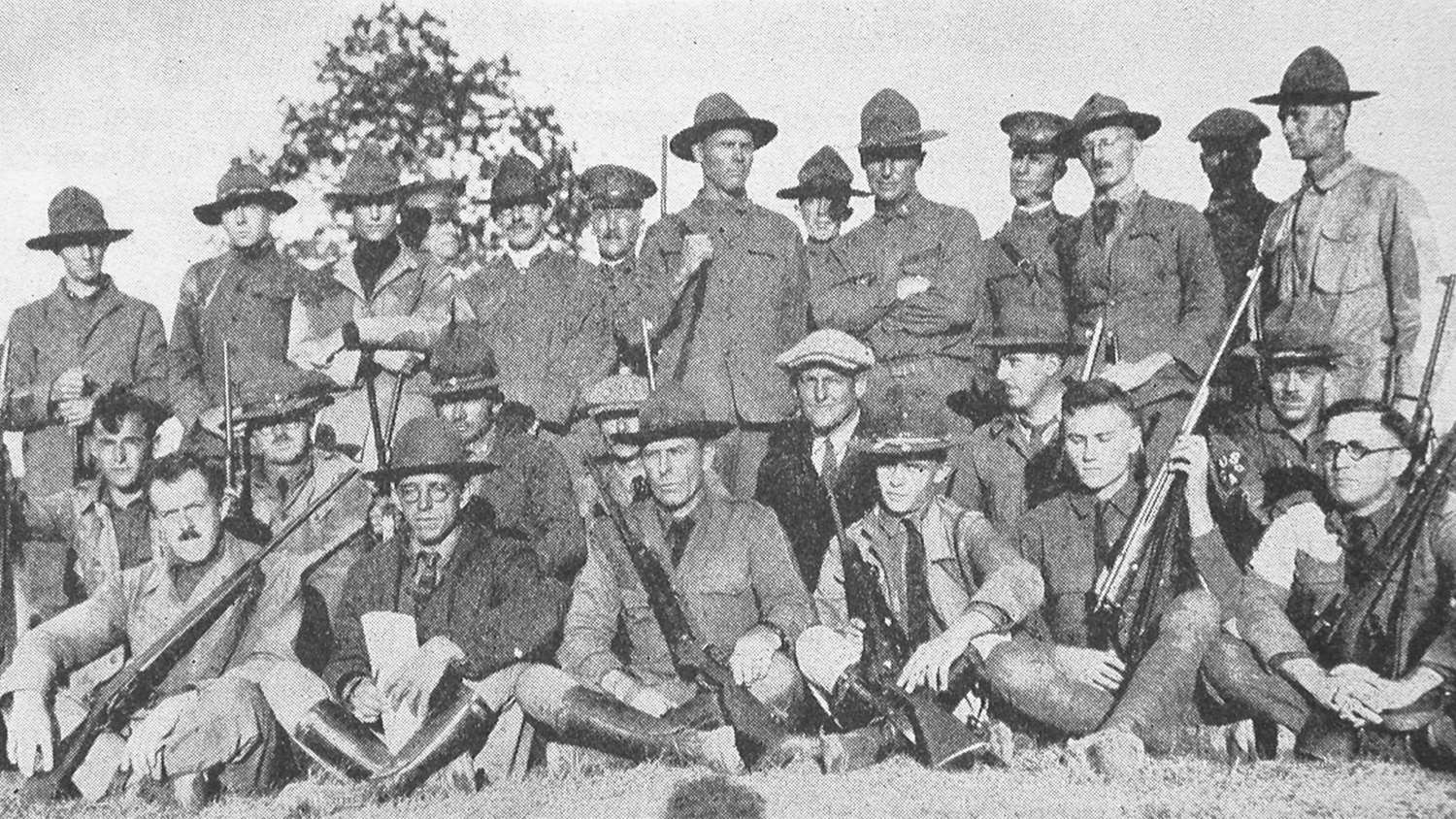
Industry notices smallbore success
The growing importance of the smallbore game prompted munitions companies to donate trophies in 1923. Equal in majesty to the bronzes and plaques awarded to centerfire shooters―these smallbore community icons are still presented to winners of the most prestigious individual and team matches to this day. The Peters Cartridge Company Trophy, Remington Trophy, U. S. Cartridge Company Trophy, Marksman Trophy, Caswell Trophy and Winchester Trophy all appeared for the first time; while the Hercules Trophy was reassigned to smallbore.
Smallbore shooters were delighted by new centrally located range which eliminated the dreaded 1-mile hike. Competitors also found a new target carrier system. Instead of stationary frames, targets were mounted on small trollies that ran on tracks. A rope and pulley system allowed the targets to be drawn down range and returned.
More skillful shooters, better rifles, and quality ammunition resulted in small shot groups. This often made it impossible to determine the number of shots fired. A temporary fix was to allow only five shots on a bullseye instead of 10. This sped-up scoring but slowed the shooting down because the trollies could not hold the required number of targets. Thus, relays became longer.
Ralph McGarity won the 1923 National Individual Smallbore Championship. He beat the field over a new course of fire for this event―10 shots at 50, 100 and 200 yards. The U.S. won the Dewar, running its string of consecutive victories to five since 1919.
The tight group issue that arose the previous year popped up again in 1924. Adopting the British double target system―a blank sheet of target board placed a few inches behind the target―was entertained but not adopted. Grosvenor Wotkyns conducted effectiveness testing of the “backers” over the winter before a final determination would be made.
A closely-fought match decided by a tie breaker gave Francis Parker the 1924 National Individual Smallbore Championship with a score of 247x250. A few days later, the Dewar Team gathered in a driving rainstorm that delayed the start. When rain stopped, the temperature dropped precipitously, which was uncharacteristic for September. Cold wind blowing in from Lake Erie threatened snow.
The match could be delayed no longer and Team Captain Wotkyns had to rely on good coaching. With 10 coaches available he divided the team into two relays so that each shooter would have a coach. The chilly 15 to 20 mph wind constantly shifted between 12 and two o’clock giving shooters and coaches a workout. Wotkyns’ confidence in his coaches and team paid off. They posted a 7779―which was 23 points better than the British. The Dewar Trophy would stay in the U.S. another year.
The 1925 National Match Program exhorted smallbore shooters to attend the matches and it worked as 104 competitors shot the National Individual Smallbore Championship in a 15 mph nine o’clock wind. Like the wind, competition was stiff, but Thomas Imler held hard and emerged the National Smallbore Champion.
Ups and downs
Captain Wotkyns and Coach Kahrs led a Dewar Team which shot 7791 to defeat the British, giving the U.S. their ninth consecutive victory. With the Dewar safely in hand, the 1925 smallbore championships came to a successful conclusion.
Amid a booming economy, the federal government inexplicably decided that 1926 was a good year to tighten its belt. The War Department was forced to cut National Matches funding. The NRA rallied―hosting a reduced National Match at Sea Girt in New Jersey. The truncated schedule meant that no national individual smallbore title would be awarded so all competitors focused on the Dewar Match. Unfortunately, high winds kept the scores down. The U.S. lost the Dewar for the first time since 1913.
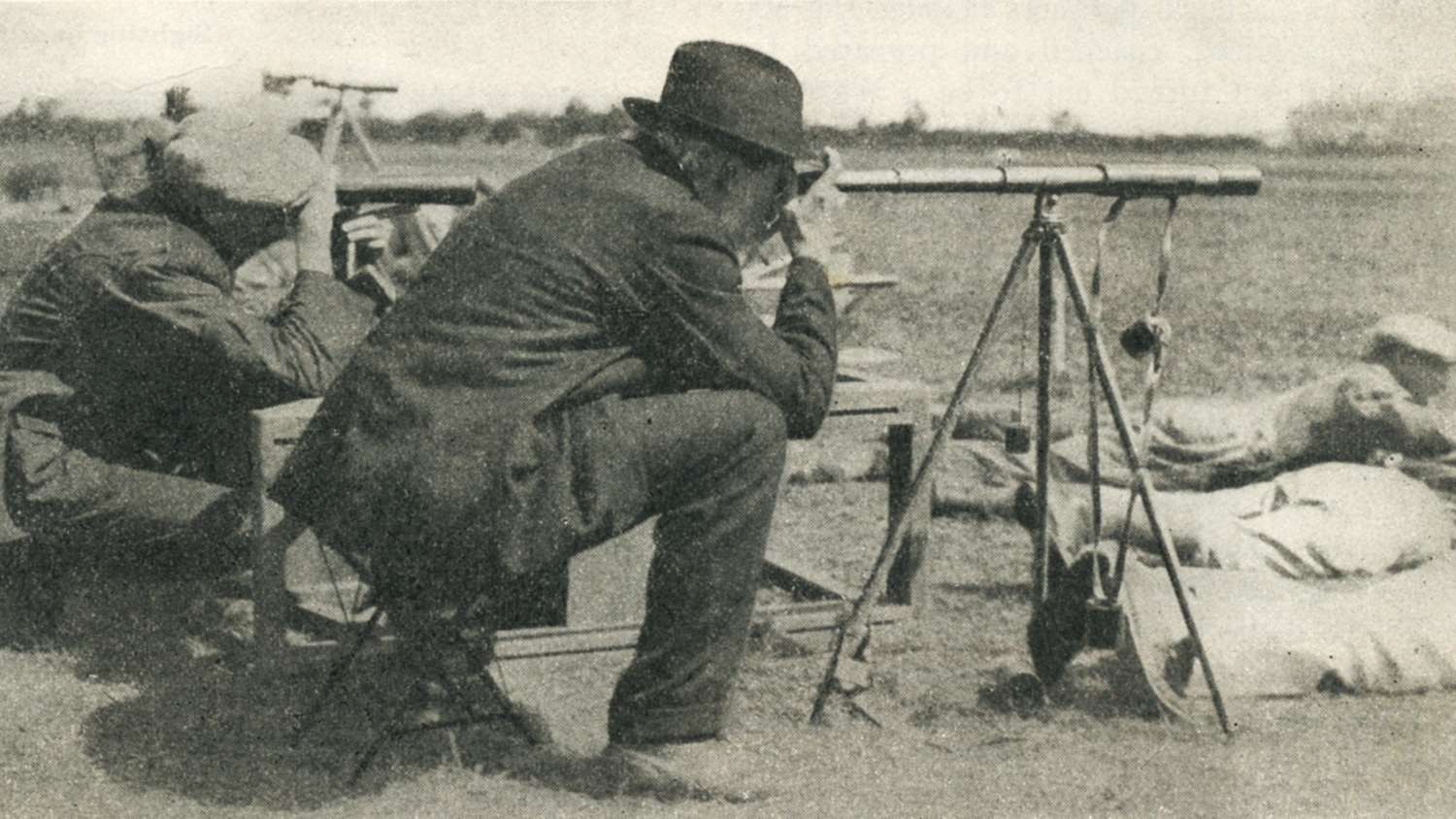
The issue of tight groups and crossfires was resolved in 1927 with the adoption of the British backer system. Another historical first came when the 1923 champion, Ralph McGarity won his second title (the first to do so) with a 248 on a tie breaker.
After the 1926 Dewar loss, the U.S. took no chances. Each rifle used in the Dewar was machine rested and mated to ammunition that gave the best performance. The match was also shot early in the morning to take advantage of the calmest conditions. The U.S. reclaimed the Dewar by beating Britain 7817 to 7793.
The Pennsylvania Railroad donated a trophy for a postal team match, like the Dewar, open to rail employees in the U.S., England, and Canada. The match got off to a fine start when the U.S. recorded the first victory.
Virgil Canfield kept a low profile during the 1928 squadded matches, not winning any, but his consistent performance set him up to win the 30-shot national individual title.
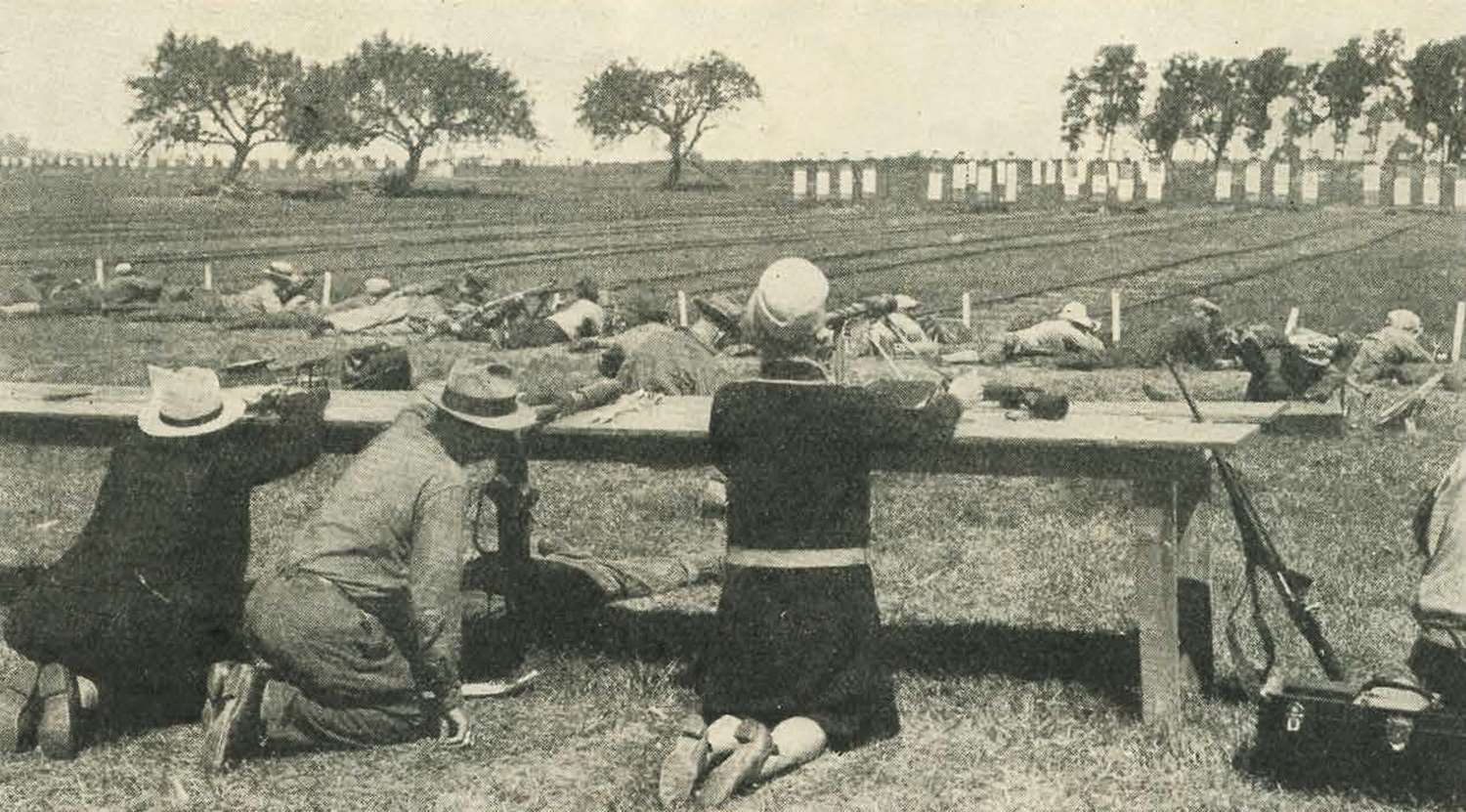
The Dewar was shot on a near perfect day with only a gentle wind from 11 o’clock. Just as in 1927, each man went to the line with a tested rifle and ammo combination. A gallery assembled behind the firing line as the team went about its business of shooting their way to victory with a record score of 7881 to Britain’s 7865.
Employees of 11 different rail companies formed the 1928 U.S. International Railwaymen’s team. Unfortunately, the British tallied 7728 to the U.S. team’s 7709. Canada finished third.
National Smallbore Individual Championship changes format
In 1929, the 30-shot match was replaced by an aggregate of the four single entry matches. The new arrangement emphasized a high level of performance over a long course. Luck now played a minor role. Connecticut barrel maker Eric Johnson and Larry Wilkens ended tied at 1070, with Johnson winning the tie breaker and the crown. With individual matches behind them, competitors focused on the Railwaymen’s and Dewar matches.
The railway men shot a score that won the Railwaymen’s Trophy and looked forward, with pleasure, to prying open the shipping crate when the silver plinth arrived back on U.S. soil.
The Dewar Team enjoyed a near perfect day. The team included 14-year-old Brad Wiles, son and grandson of veteran Dewar Team members Russell Wiles Junior and Senior. Wiles became the youngest to ever make the team, and the first third generation Dewar Team member. The youth movement also included 19-year-old Mary Ward. She posted the only 200 at 50 yards to help the U.S. retain the Dewar Trophy.
The Dewar victory ended the 1929 National Smallbore Championship―and smallbore’s first decade―on a pleasing note. The smallbore community could look back on the past decade with pride. From humble beginnings as a high power sideshow, smallbore matured and was quickly establishing its own worthy traditions. Crossman’s dream had become a reality.
Read Part 3, Depression and War: National Smallbore Outdoor Rifle Championship History.













